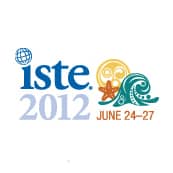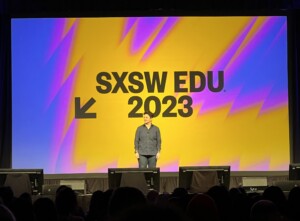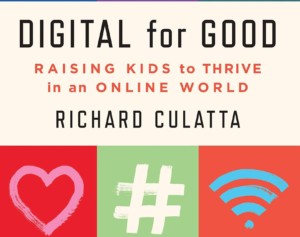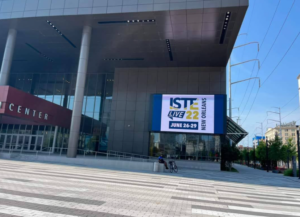3 Trends You May Have Missed At ISTE

By Frank Catalano
I tend to eschew the advice of seasoned, world-weary attendees to the International Society for Technology in Education (ISTE) conference each year. “Ignore the exhibit hall,” they implore. “All the real action is in the sessions. The exhibits are just products.”
What they fail to realize is that a good education technology product or service is innovation reduced to usability. While how they’re applied is critical, good products can enable or extend great educator practice. And there’s no better way to get a feel for what excites teachers and techies than to see which booths draw crowds – unless, of course, the exhibitor is just giving away cool free stuff.
While the big players almost always draw big crowds (yes, Google, that includes you), here are three interesting things you may have missed in ISTE 2012’s massive, overwhelming San Diego exhibit hall this June:
- Mobile … cases. The sign that a technology has truly arrived is expressed in the aftermarket it attracts. There were probably – I lost count – a half-dozen companies hawking student- (and teacher-) proof cases for tablets and smartphones. This was in addition to ever lower-cost Android tablets entering the U.S. market, the latest being the Matrix One, a $100 512MB RAM, 8GB, Ice Cream Sandwich seven-inch device, tucked away in a corner of the hall.The only disappointment? My personal choice, Otterbox, did not bring a Kindle Fire case. Then again, it might also be an indicator of the company’s assessment of the Fire’s school uptake.
- Tablet coordination. Consider this a realistic nod to the realization that, even with a trend toward personal devices and personalized education, there is still a need for using those devices for group instruction. Startup Nearpod showed off its software apps to synchronize what’s seen on students’ iPads with what the teacher is teaching, essentially turning each student device into a presentation screen but allowing for individual assessment and feedback. The model is relatively risk-free freemium. And perhaps because of both, Nearpod’s booth was mobbed.A similar yet different tack was taken by startup DisplayNote. Coordination is still the objective, but DisplayNote emphasizes it works on “any” device or platform: Mac, Windows, Linux, Android and iOS. Educator presentations and documents can be annotated and shared with other connected devices. Another difference? No freemium. Pricing starts at $649 per classroom, a one-time charge which seemed to elicit surprise in the audience at the demo I watched.
- Non-textbook, non-iBook eBooks. While it may seem passé, there is still life in the standard story or non-fiction digital book that is not a textbook, and different delivery approaches are evolving. Brain Hive rolled out a free browser-based platform for libraries that includes about 3,000 basic, non-interactive eBooks. “Free,” in that the catch is Brain Hive provides an on-demandlibrary: schools pay $1 per student checkout. The upside is said to be the ability to set a dollar cap to manage library budgets. The downside is, well, wondering what happens to the library for the rest of the school year if it should hit the cap.Nearby, Capstone Digital (full disclosure: a former client) said it now had 3,600 titles in its my ON Reader library of enhanced eBooks, tied to Lexile measures and embedded assessments, with an iPad app to be added in August. Both Brain Hive and Capstone Digital have titles from familiar publishers.But my sentimental pick for eBooks was off the show floor, in a press briefing room: Startup Wanderful Books is bringing back the fondly remembered Living Books, which at one time showed the potential of CD-ROM, first as $5 iOS apps and later as apps for Android, Mac and Windows. The first updated titles are Arthur’s Teacher Trouble, The Tortoise and the Hare, and Little Monster at School, all in multiple languages, with interactive features for multi-touch devices, and with art work that looks remarkable on newer, high-resolution devices.
So before one dismisses any education conference trade show floor as being just about products, consider the exhibit hall as a microcosm of the marketplace – and that what seems just interesting by itself may, when taken in aggregate, indicate a larger trend.
Frank Catalano is a consultant, author and veteran analyst of digital education and consumer technologies. He tweets @FrankCatalano, consults as Intrinsic Strategy, and contributes regularly to GeekWire and MindShift. He’s been walking the show floor at ISTE since it was NECC.







0 Comments
Leave a Comment
Your email address will not be published. All fields are required.